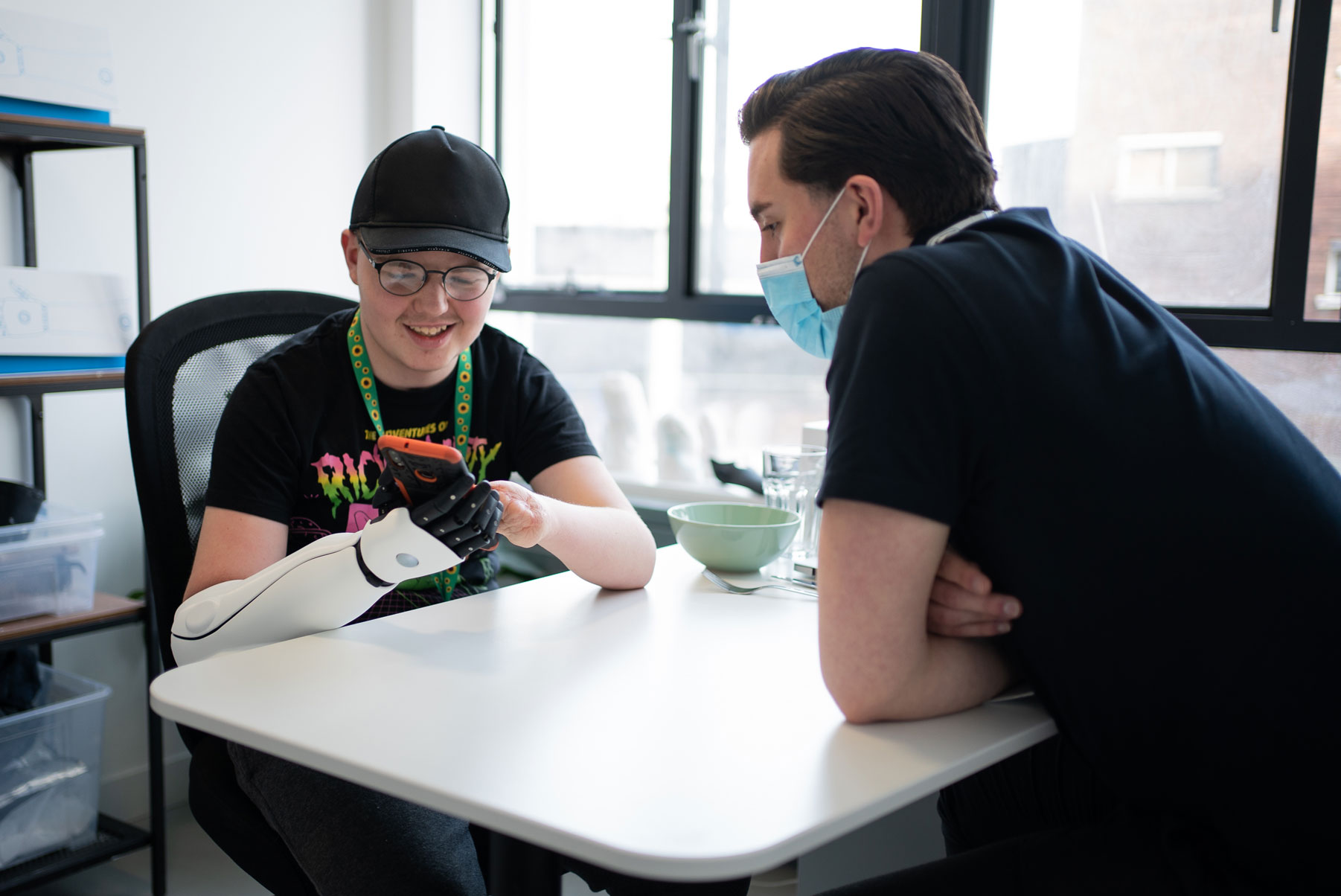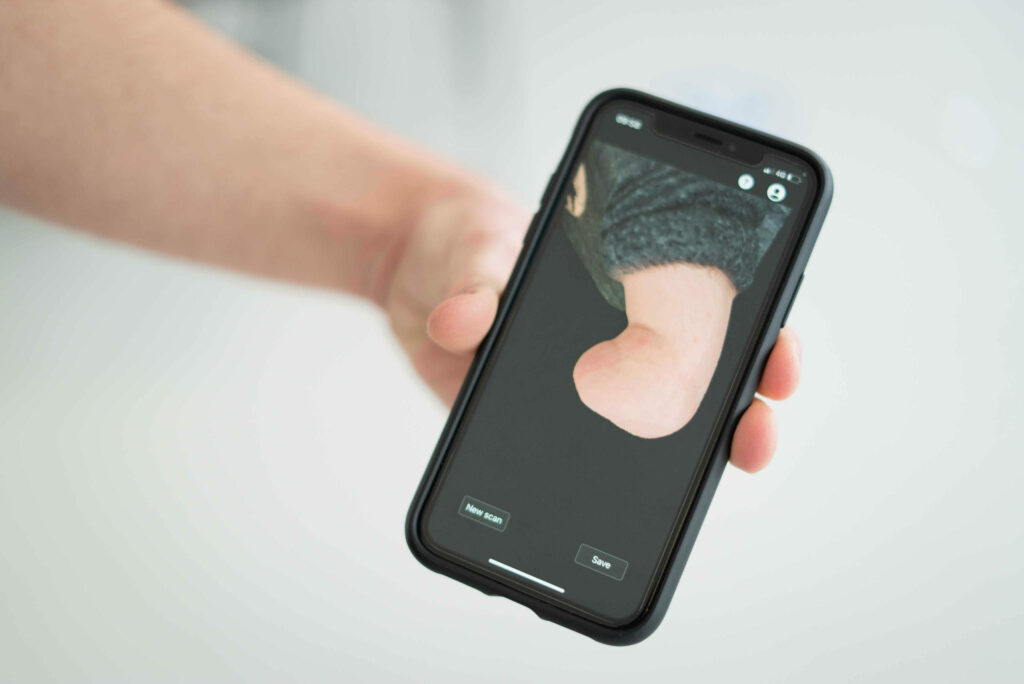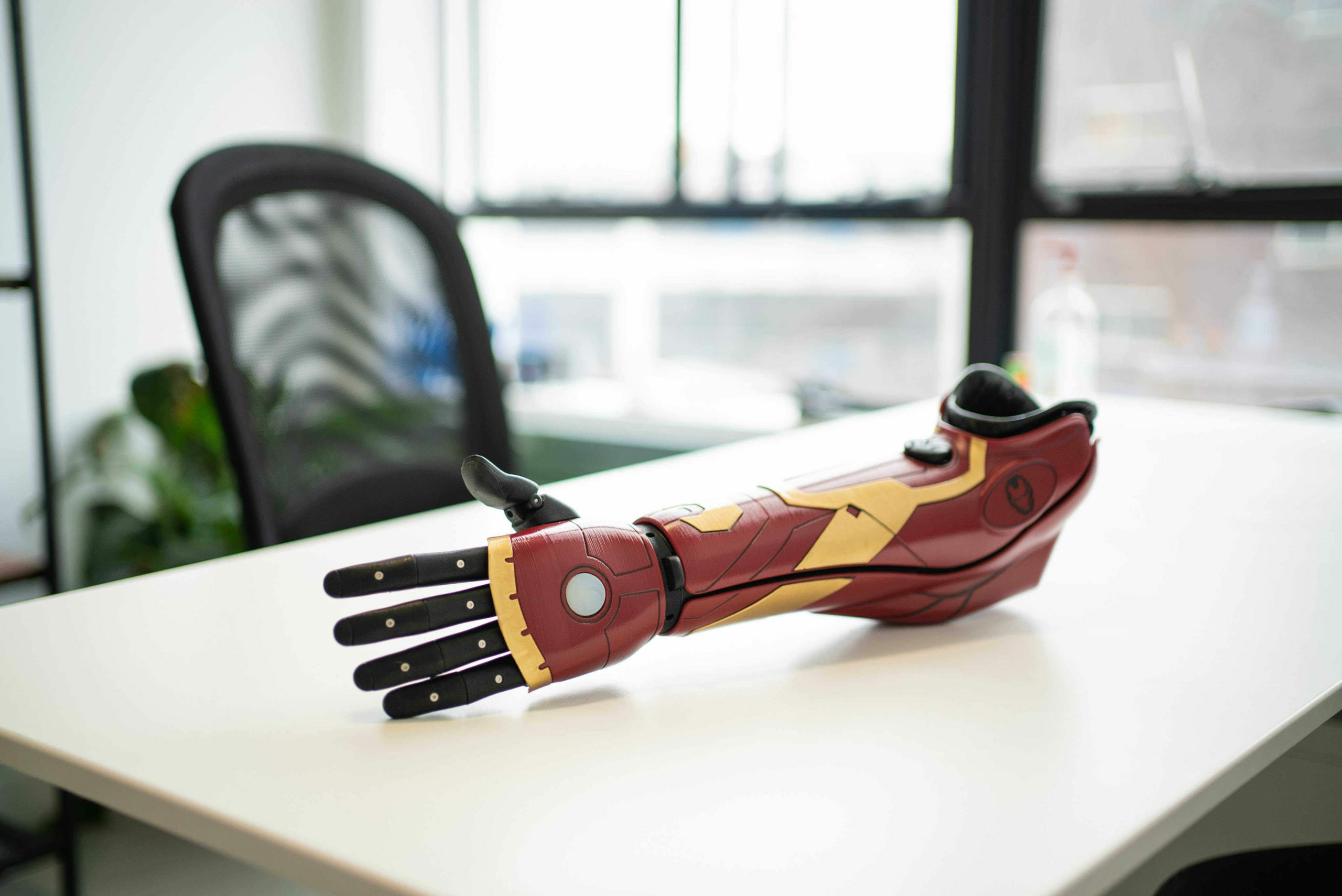How to train after an arm amputation, and 7 other important questions to ask your prosthetist
16th September 2021

16th September 2021

If you have recently gone through an arm amputation, you will be embarking on a mental and physical journey to recovery. How long this will take, and how physically demanding it will be will vary for each person. The most important thing to help recovery is building a support network around you for as long as you need.
One person that you might decide to include in your support network as part of your recovery is a prosthetist who will help you decide on the best prostheses options for your lifestyle.
Here at Open Bionics, our in-house prosthetists helps individuals decide on whether the Hero Arm is the right prosthesis after an arm amputation. To help you prepare for your first appointment with a prosthetist, we asked Kameron Maxwell, our in-house prosthetist in the UK the questions that patients commonly want answers to.
If you would like to speak to our prosthetist about whether the Hero Arm could be the right fit for you, register your interest.
Following an upper limb amputation, you should expect to be referred to a prosthetics rehabilitation centre as early as 4-6 weeks post-amputation, where you will meet a team of medical professionals. This team can consist of a consultant in rehabilitation medicine, a prosthetist and a physiotherapist. Occupational therapists and psychologists may also be involved at this stage in your post-amputation rehabilitation journey.
“
If you opt for a myoelectric prosthesis, a prosthetist will simply ask you to try move your muscles a certain way to locate the suitable sites on your arm where sensors can read movements the best. Here at Open Bionics, we use cutting-edge 3D scanning technology to take measurements, which is non invasive, so at no point should you be experiencing pain or discomfort during your prosthesis fitting.
”
Each medical professional will contribute to your early rehabilitation in their key area of expertise. As your limb presentation volume stabilises, you may be prescribed either a cosmetic or body powered prosthetic arm. These devices will allow you to become accustomed to wearing a prosthesis and aid with your recovery. You should expect to develop a close working relationship with your prosthetist, and wider multidisciplinary team, as adjustments to your prosthesis and further therapy might be needed.
Based on your residual limb presentation, individual prosthetic requirements and personal goals, your prosthetist will recommend the right upper limb prosthesis for you.
There are several possible prosthetic solutions that may be offered after an arm amputation: cosmetic, body-powered; externally-powered; and prostheses for specific-activities. It is expected that changes to personal circumstances, interests or even growth will result in revisions to your prosthetic prescription.
In light of this, it is important to maintain a close working relationship with your prosthetist and give continuous feedback on any changes to socket design, materials, componentry and functionality, to achieve the optimal prosthetic solution for you.
If you would like to opt for a myoelectric prosthesis, like the Hero Arm, previous experience with a passive prosthesis will be incredibly valuable. Both types of upper limb prostheses consist of bespoke part, known as a socket, which will be engineered to fit your residual limb. Unlike a cosmetic passive prosthesis, which offers no active movement, myoelectric prostheses are operated by using sensors and an external battery. The Hero Arm uses myoelectric sensors which detect underlying muscular movements generated from specific muscle groups in the arm. These are then amplified and converted into intuitive and proportional bionic hand movements.
Absolutely not. If you opt for a myoelectric prosthesis, a prosthetist will simply ask you to try move your muscles a certain way to locate the suitable sites on your arm where sensors can read movements the best. Here at Open Bionics, we use cutting-edge 3D scanning technology to take measurements, which is non invasive, so at no point should you be experiencing pain or discomfort during your prosthesis fitting.

You will be required to attend a series of medical appointments before being fitted with your definitive upper limb prosthesis. This clinical pathway will vary considerably from service to service and this may take up to several months. During your rehabilitation, a multidisciplinary team which will include your prosthetist will work together to support you in all aspects of your recovery. From training on how to integrate your prosthesis within a workplace environment, to the management of phantom limb pain and sensations, it’s really important that you give feedback at every stage to make sure the right adjustments can be made.
If you opt for a myoelectric prosthesis like the Hero Arm, rehabilitative training is an important phase in your clinical journey. At each appointment, you will be presented with an opportunity to become accustomed to the Hero Arm and practise activating and using our Hero Arm Trial Kit. Once you have been fitted with your own custom-made Hero Arm, there will be scope for you to work with our prosthetist on achieving important activities of daily living (ADL) and integrating your prosthesis within your everyday life. Additional training sessions can also be arranged on request when you are presented with lifestyle changes to your home or work environment, or if you wish for additional support engaging in new activities or hobbies.
The Hero Arm is one of the most affordable multi-grip bionic arm on the market. Featuring multiple grip patterns and gestures, the Hero Arm has been recommended by medical professionals for those over the age of eight years old with an acquired or congenital below-elbow level of limb absence.
If you believe this best describes you, a family member or a friend, then please register your interest in the Hero Arm to start your bionic journey.
Your bionic arm, or upper limb prosthesis should allow for you to accomplish most everyday tasks, also known as activities of daily living (ADL). These include activities such as getting dressed, preparing meals, eating, drinking, personal hygiene, toileting, grasping, carrying items, and performing bimanual tasks. When beginning your journey with an advanced upper limb prosthesis, you will be supported by your prosthetist and/or occupational therapist in learning to achieve these ADL to acquire a greater level of independence and confidence with your prosthesis.
It is important to understand, however, that your prosthesis will not be able to replicate the normal function of a sound limb, and there are limitations to even the most advanced bionic arms. For the best outcome, you should highlight any activities that you wish to use your upper limb prosthesis for so that your prosthetist can create a suitable prosthetic prescription for your personal environment and lifestyle.
If you are preparing for your first appointment with a prosthetist, here are a few more questions you may want to think about covering in your first appointment:
If you would like to explore different prostheses options, or would simply like to try the Hero Arm, please register your interest and we will be in touch to share more information.

The Hero Arm uses myoelectric sensors which detect underlying muscular contractions generated from specific muscle groups in the arm. These are then amplified and converted into intuitive and proportional bionic hand movements. Each Hero Arm is custom-built for optimal comfort, and fits like a glove.